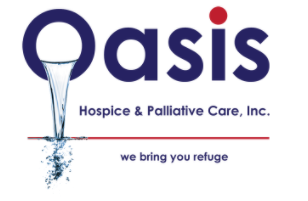Oasis Hospice is the best cancer hospice in Chicago that cares for patients. For more information and assistance call (708) 564-4838
When it comes to hospice care, individuals frequently have various questions. After all, it is rarely discussed, and many people do not consider it until they are forced to. One of the most often asked questions is how long patients remain in hospice care. And while this may appear to be a straightforward question, the solution is highly complex. To help you better comprehend this, continue reading as we cover several aspects of hospice care.
How Is Hospice Care Defined?
Before delving into this subject, it’s necessary to define hospice care. To put it simply, palliative care is a type of care that focuses on the quality of life for patients suffering from a life-threatening illness. The primary objective is to make patients’ final days as comfortable as possible. This sort of treatment is structured so that it meets the patient’s physical, social, and spiritual needs. It is why caregivers make a point of involving family members in all patient-related decisions. Teams of professionals work around the clock to ensure that patients pass away in the most peaceful manner possible.
What Is the Difference Between Hospice and Palliative Care?
Previously, we addressed the distinction between palliative and hospice care. However, to provide a complete solution to this topic, it is essential to address specific points made in that essay. While both styles of care attempt to provide patients with compassionate comfort, the primary distinction is in the severity of the condition. Palliative care is focused on controlling the symptoms associated with a severe illness. On the other hand, hospice care is oriented toward assisting people in their final stages of life. Patients diagnosed with a terminal illness with a prognosis of six months or less are eligible for hospice treatment. You should always look for the best cancer hospice chicago for your loved ones.
How Long Do Hospice Patients Remain in Care?
Answering this question is challenging because the situation varies significantly from instance to instance. Considering that this treatment will continue until the patient dies, determining a precise number of days, weeks, or months is difficult. However, for simplicity, we do have data that can assist us in better understanding what is going on. What people need to understand is that hospice care is a lengthy process. Indeed, approximately 12 to 15% of patients survive six months or longer, whereas 50% die within three weeks. Patients under the age of 65 have a greater chance of survival, whereas those referred to hospice care immediately from a long-term hospital stay had a 95% chance of dying within six months.
Hospice Care for Cancer Patients in the Final Stages
Despite the most significant efforts of the doctor, the patient, and the family, cancer therapies sometimes fail to function, and a cure or long-term remission is no longer possible. When this occurs, hospice can accomplish a great deal. Hospice care guarantees that cancer patients are supported, cared for, and surrounded by the people and things they cherish. While hospice does not necessarily add additional days to a cancer patient’s life, it can significantly improve the latter months, weeks, and days. When is the appropriate time for hospice care?
What Does Hospice Do For Cancer Patients
Only a physician has the clinical authority to determine a cancer patient’s prognosis. When the patient’s survival time is six months or less, they are deemed to have advanced-stage cancer and may qualify for hospice care. Each patient is unique, and their symptoms vary according to the type of cancer they have; however, there are a few symptoms that are common among malignancies that indicate the disease has moved to an advanced stage:
- The patient’s condition is deteriorating rapidly, and the malignancy is progressing.
- Treatment has ceased to be completely effective.
- The cost of treatment surpasses the potential advantages for the patient and family.
Hospice Care for Patients With Cancer
“I wish I’d known about hospice sooner,” is a common sentiment expressed by individuals caring for a cancer patient. While the oncologist or attending physician is ultimately responsible for ordering a hospice examination, the sooner a patient is accepted to hospice, the more benefits they and their loved ones will receive. One of the most widespread misconceptions regarding hospice is that it should be used exclusively in the final days or weeks of life. In truth, hospice benefit is intended for patients who have a prognosis of six months or fewer. What is the average time in hospice for cancer patients?
How Can Hospice Assist Patients With Cancer?
Cancer patients and their families who receive hospice care have a higher quality of life than those who do not.
1 Hospice is brought to the patient by an interdisciplinary team of experts. The group approaches advanced-stage cancer from both the patient’s and caregiver’s and other loved ones’ perspectives. A physician, nurse, hospice assistant, social worker, chaplain, volunteer, and bereavement specialist comprise the team.
Nearly 40% of those seeking hospice care in the United States are in advanced stages of cancer. 2 Cancer patients receiving hospice care can comfort that they are not alone on this journey. Every hospice team member has expertise helping individuals through the disease’s and their lives’ most difficult stages.
Cancer patients receive care depending on their unique health concerns and their preferences for the type of healthcare they receive. Your status will be checked frequently, and your care plan will be adjusted as your symptoms and condition change, even daily.
Hospice provides the following services to cancer patients:
Coordination of care at all levels—
A treatment plan is prepared with the patient’s oncologist or other physician’s input and approval. The team meets regularly to discuss the patient’s physical, emotional, and spiritual well-being and any needs or concerns expressed by the family. Additionally, the hospice coordinates and distributes all medications, medical supplies, and equipment necessary for the patient’s diagnosis.
Pain treatment and symptom control—Hospice focuses on ensuring patients are comfortable, pain-free, and able to enjoy life while maintaining as much influence as possible over daily decisions. Continuous care might be instituted if symptoms grow severe, with workers giving 24-hour care in shifts until symptoms are controlled.
Emotional and spiritual support—A terminal cancer diagnosis may bring solid emotions or spiritual concerns. Hospice has the resources necessary to support patients’ emotional and spiritual well-being.
Oasis Hospice provides care to patients wherever they call home – in their homes, long-term care institutions, or assisted living communities. If symptoms become unmanageable at home, inpatient services can provide 24-hour care until the patient can return home.
How Can Hospice Assist a Cancer Patient’s Family?
Caring for a cancer patient can be emotionally draining and physically taxing. Family caregivers make complex medical and financial decisions on behalf of others and provide emotional support. Choosing to discontinue medical treatment can be emotionally draining; many families feel overwhelmed. Hospice provides care for families in a variety of ways:
Education and training of caregivers—The family caregiver, is critical in assisting the hospice team in caring for the patient. Hospice can allay families’ fears by educating them about what to expect and how to care for their loved ones when symptoms worsen, and communication becomes more difficult.
Assistance with challenging decisions—The hospice team assists families in making difficult decisions that affect the patient’s health and quality of life.
Support on an emotional and spiritual level—Caregivers maintain their emotions, but they require a means of expressing them. Hospice care assists caregivers by providing outside resources, a listening ear, or a shoulder to weep on.
Financial assistance—While hospice services are covered by Medicare, Medicaid/Medi-Cal, and private insurers, families may face financial difficulties due to a prolonged illness. Social workers can aid families in budgeting for hospice care and locating financial assistance. Following a death, they can assist bereaved families in obtaining financial support through human services, if necessary.
Respite care—Caring for a loved one who is terminally ill can be highly stressful. When the caregiver cannot care for the patient, hospice provides up to five days of inpatient care.
Services for bereavement— For up to 13 months following a death, the hospice team works with surviving loved ones to assist them in expressing and coping with their grief in their unique way.
What Are the Generally Beneficial Consequences of Hospice Care?
Whether you are already familiar with hospice or are seeking information, you may be unaware of the many benefits hospice care provides for cancer patients and their families. If you or a loved one is battling advanced cancer, hospice can offer the following:
- Hospice provides individualized care and support to patients and families during this challenging time in their lives. We are receptive. We are advocates. We strive to improve people’s quality of life.
- Reduced readmissions. As the condition progresses, symptoms may worsen, and many patients are forced to make frequent emergency room visits or endure repeated hospitalizations.
- Hospice decreases readmissions by addressing pain and signs in the patient’s home.

